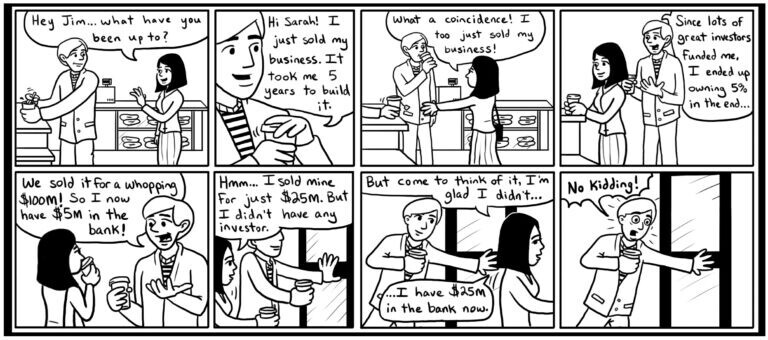The Accelerator Conundrum: Fortune in the Middle of the Pyramid

Sramana Mitra’s “Fortune in the Middle of the Pyramid” theory of Development Economics presents an alternative to the traditional focus on the “bottom of the pyramid” (BoP). While BoP strategies aim to create products and services for the very poorest populations, Mitra’s theory proposes that tech entrepreneurs can build businesses that target the entire spectrum of the economic pyramid, not just the lowest rung.
>>>Featured Videos
Best of Bootstrapping: AI Chatbot Startup Bootstrapped with a Paycheck

It took CoRover CEO Ankush Sabharwal and his co-founders two years to launch their first customer, The Indian Railways. During this time, the founders held on to their jobs, diligently fulfilling their responsibilities while also pursuing their dreams. Here is our conversation from 2023.
Sramana Mitra: Let’s go to the very beginning of your journey. Where are you from? Where were you born and raised? What kind of background?
Ankush Sabharwal: I come from a remote district in India in the extreme north – Rajouri. I was brought up there. My family moved to Jammu. I did schooling there. For Masters, I’ve done Software Engineering.
The Accelerator Conundrum: Missing Resuscitation Framework

The claim by the Startup Genome Project that a significant percentage of startups fail due to “premature scaling,” often driven by overfunding, is a critical insight that challenges the prevailing “growth at all costs” mentality in the venture capital world. While the exact percentage (e.g., 70% or 74%) might vary slightly across their reports and methodologies, the core message is consistent: having too much money too early can be detrimental.
>>>Video FAQs
Can 1M/1M Help Me Raise Money?
How Does 1M/1M Democratize Entrepreneurship Education?
How Does 1M/1M Democratize Management Consulting?
When Is The Right Time To Join 1M/1M?
Can 1M/1M Help Me With Business Development?
Can 1M/1M Help Me With Market Sizing?
Can 1M/1M Help Me Validate My Product?
Will I Have Private 1-on-1 Sessions In 1M/1M?
How Does 1M/1M Help Entrepreneurs Connect With Silicon Valley?
Mentoring or Consulting?
Why Does 1M/1M Charge $1000 a Year?
Why Does 1M/1M Partner With Local Organizations?
Why Don\’t Mentoring Networks Work?
Why Is It Important To Study With 1M/1M Now?
Dan Stewart Story
Vikrant Mathur Story
The Accelerator Conundrum: Missing Research Framework

Academic research on startup accelerators has undeniably provided valuable insights into the traditional model, largely defined by fixed-term, cohort-based, mentorship-driven programs culminating in a demo day and typically involving seed investment for equity. However, the pioneering model of 1Mby1M highlights significant gaps in this established academic framework.
>>>1Mby1M Entrepreneur Bootstrapping an AI Deep Learning Venture to over $5M ARR: Bharath Gaddam, CEO of Data Poem (Part 2)
Sramana Mitra: Did you try it inside of Omnicom?
>>>The Accelerator Conundrum: Academic Research

Academic research on startup accelerators has grown significantly since the emergence of the model in the mid-2000s, with scholars seeking to understand their effectiveness, design principles, and impact on entrepreneurial ecosystems. The research largely focuses on understanding what makes accelerators successful, for whom, and under what conditions.
>>>The Accelerator Conundrum: How to Evaluate a Virtual Accelerator

Evaluating a virtual accelerator like 1Mby1M requires a comprehensive framework that considers its unique characteristics as a virtual, long-term, and bootstrapping-focused program, as well as its stated goals of helping a million entrepreneurs reach a million dollars in annual revenue.
>>>The Accelerator Conundrum: How to Evaluate an Accelerator

Evaluating a startup accelerator, whether it’s a traditional program or a unique model like 1Mby1M, requires a structured framework that aligns with a founder’s specific goals and the stage of their business. The key is to compare what each offers against what you truly need.
>>>